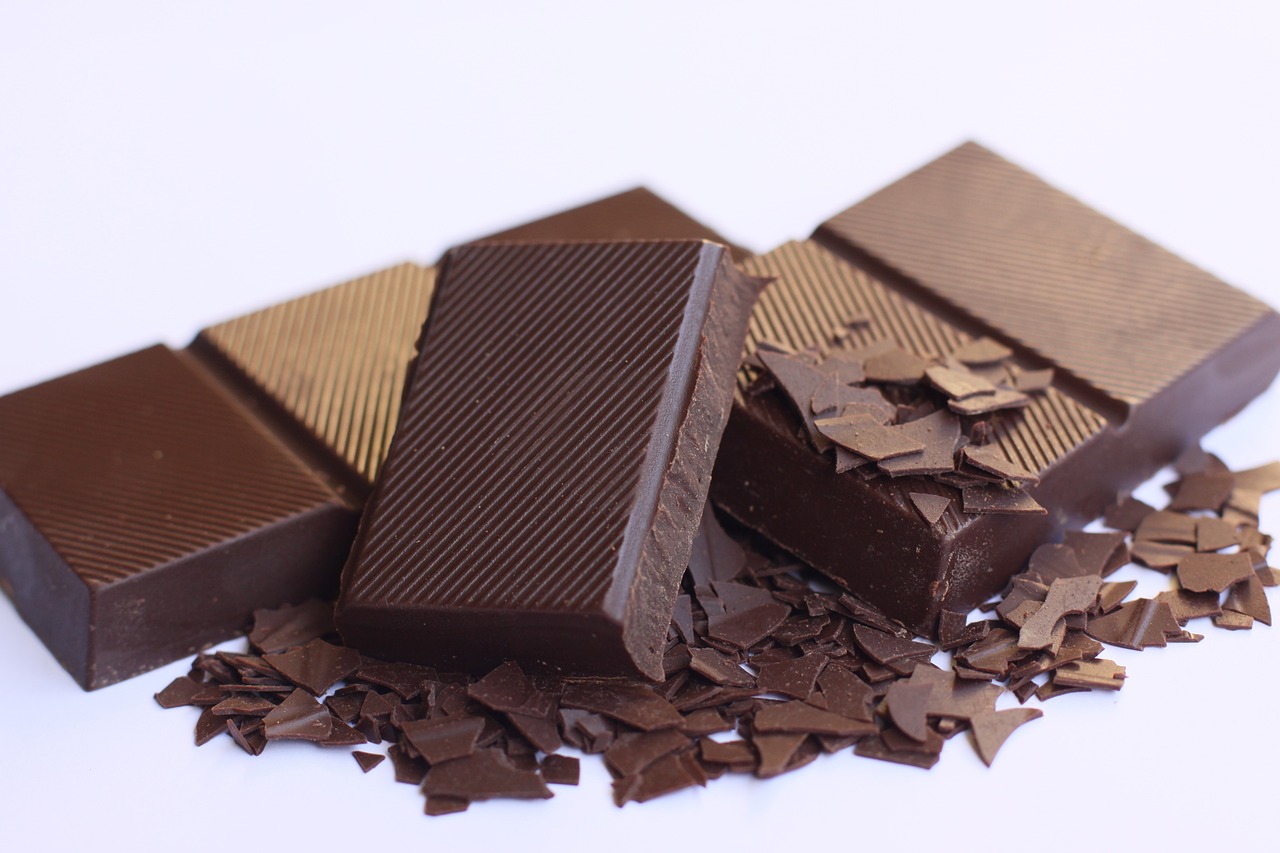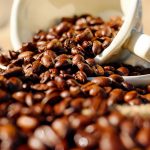Embarking on a journey to unveil the hidden layers of our everyday indulgences, we encounter a question that stirs both curiosity and necessity: How much caffeine is really in chocolate? This inquiry isn’t just for the caffeine-sensitive or the health-conscious; it’s a universal puzzle that touches the lives of anyone who relishes the rich, velvety embrace of chocolate. With a world increasingly vigilant about what we consume, understanding the caffeine content in chocolate transcends mere curiosity—it becomes an essential piece of knowledge for managing wellness and indulgence hand in hand.
In this article, we dive deep into the heart of cacao’s secrets, exploring the nuances of caffeine content across different types of chocolate. From the creamy allure of milk chocolate to the robust intensity of dark chocolate, we unravel how these delectable treats influence our energy levels, mood, and overall health. Our exploration is grounded in the latest scientific research, ensuring that you receive information that is not only accurate but also actionable.
Whether you’re a casual consumer, a culinary aficionado, or someone navigating the complexities of caffeine sensitivity, this guide promises to illuminate the shadows of doubt surrounding chocolate’s caffeine content. By the end of this journey, you’ll be equipped with the knowledge to make informed choices about your chocolate consumption, all the while preserving the joy and satisfaction that comes from this ancient, beloved treat. Join us as we decode the mystery, providing insights that promise to enhance your appreciation and understanding of chocolate in a way that’s never been explored before. Get ready to be intrigued, informed, and inspired to look at your favorite chocolate bar in a whole new light.
Caffeine Amount by Chocolate Type
The three main categories of chocolate—dark, milk, and white—vary significantly in their caffeine content. This is directly tied to the percentage of cocoa solids present, as cocoa beans naturally contain caffeine.
Chocolate does contain caffeine, with dark chocolate having the highest amount compared to milk and white chocolate. The caffeine content in chocolate varies depending on the type and origin of the cacao beans. Dark chocolate contains around 22.7 mg of caffeine per ounce, while milk chocolate has about 9 mg per 1.55 ounces. White chocolate, on the other hand, contains zero caffeine as it only consists of cocoa butter without cocoa solids.
The caffeine in dark chocolate is due to its higher cocoa solid content, making it the variety with the most caffeine. Theobromine, another stimulant found in cocoa solids, contributes to the energy boost from chocolate but with a smaller spike compared to caffeine[4]. Even though dark chocolate has caffeine, it is still relatively low compared to a standard cup of coffee, making it a suitable option for those sensitive to caffeine. Additionally, hot chocolate contains minimal caffeine, averaging around 5 mg per serving but can vary depending on the richness of the drink. White chocolate, which only contains cocoa butter and no cocoa solids, has negligible amounts of caffeine.
Milk chocolate has a lowered caffeine content as cocoa solids must constitute at least 10-12% by weight. The calcium in milk binds to compounds like caffeine and reduces the rate of absorption. A 40g serving of milk chocolate contains approximately 10mg of caffeine.
White chocolate contains no cocoa solids just cocoa butter, so it has negligible traces of caffeine at best. A 40g serving likely provides less than 5mg of caffeine.
How Chocolate Production Impacts Caffeine
The amount of caffeine ultimately retained in chocolate depends not just on the cocoa percentage but also on how the chocolate was produced.
- Cocoa bean type: Criollo cocoa beans naturally have the highest caffeine levels, while Forastero beans contain the least caffeine. Trinitario beans offer mid-range amounts.
- Roasting: Lightly roasted cocoa beans retain more caffeine versus heavily roasted. However, roasting is necessary to develop the classic chocolate flavor.
- Alkalization: Also called dutching, this raises the pH of cocoa to achieve a darker color and smoother texture. But it can remove up to half the caffeine in cocoa beans.
- Conching: This intensive mixing further reduces bitterness and caffeine content slightly by promoting evaporation.
So while chocolate boasts caffeine, processing factors significantly impact how much remains in the final product.
How Cacao Origin Affects Caffeine
Where cocoa beans are grown also affects caffeine levels in chocolate. As cocoa beans contain caffeine naturally, their country and region of origin influences the caffeine present.
For instance, Criollo cocoa beans from Venezuela, Nicaragua, and Ecuador tend to have very high caffeine content. Meanwhile, Forastero cocoa beans from West Africa are naturally lowest in caffeine.
Latin America overall provides cocoa beans with more caffeine on average compared to Southeast Asia or the Pacific. However, there can be significant variation even within countries. Specific farms, soil conditions, climate, and cultivation practices all impact caffeine content in the cacao crop.
So savoring the subtle flavor notes imparted by different origins provides the bonus of experiencing their unique caffeine levels.
Caffeine and Theobromine in Chocolate – Implications for Health

To understand the stimulant effects of chocolate, it helps to compare the two primary compounds responsible—caffeine and theobromine.
Caffeine is the more widely known stimulant also present in coffee, tea, and energy drinks. It has several effects:
- Increases alertness, focus, and energy levels
- Boosts metabolism and fat burning
- Improves physical performance and endurance
- Elevates mood and concentration
However, excessive caffeine intake can cause anxiety, insomnia, digestive issues, and heart palpitations in sensitive individuals.
Theobromine is an alkaloid almost unique to cacao plants. It offers mild stimulant effects including:
- Increases blood circulation and heart rate
- Relaxes airways allowing easier breathing
- Boosts mood via dopamine release
- Improves reaction time and information processing
Research suggests theobromine may also offer heart protective benefits by lowering blood pressure and cholesterol. Amounts found in chocolate are generally not a health concern.
So while chocolate has significantly less caffeine than other sources, its added theobromine content contributes to chocolate’s uplifting effects.
Enjoying Chocolate Caffeine Safely
To consume chocolate caffeine safely, the following daily intake limits are advised:
- Children 4-6 years old: Up to 45mg caffeine
- Children 7-9 years old: Up to 62mg caffeine
- Children 10-12 years old: Up to 85mg caffeine
- Teens 13-19 years old: Up to 100mg caffeine
- Adults: Up to 400mg caffeine
Pregnant women should also limit caffeine from all sources to 200mg daily maximum.
For adults, this equates to eating approximately 100g of dark chocolate with 70% cocoa in a day. Consuming chocolate within advised limits ensures caffeine stimulation remains pleasant and side effects are avoided.
How Chocolate Compares to Other Caffeinated Products
To put chocolate’s caffeine content into context, it contains far less per serving than other caffeinated foods and beverages.
- An 8oz cup of brewed coffee has ~95-200mg caffeine
- A 12oz can of cola has ~35mg caffeine
- An 8oz cup of black tea has ~50mg caffeine
- A 1.55oz espresso shot has ~77mg caffeine
- A 12oz Starbucks’ Frappuccino has ~65mg caffeine
- A 1oz square of dark chocolate has ~12mg caffeine
So while chocolate contains some caffeine, its levels are modest compared to most other dietary sources. This makes it easier to consume chocolate’s caffeine within reasonable limits.
Caffeine Labeling and Regulation
While chocolate naturally contains caffeine, regulations prohibit companies from adding extra caffeine. This does not include other forms of cacao like cocoa powder, cacao nibs or chocolate extracts.
Currently no U.S. regulations require the labeling of natural caffeine levels in cocoa products, though some companies provide it voluntarily.
Groups like the World Cocoa Foundation have requested that chocolate makers label caffeine content to support informed consumer choices. Until labeling becomes mandatory, estimated caffeine amounts must guide chocolate intake.
Expert Guidance on Caffeine and Chocolate
Dietitians provide the following advice about caffeine consumption from chocolate:
- Enjoy chocolate caffeine in moderation as part of a balanced diet.
- Make sure total caffeine intake from all sources remains within advised limits for your age group.
- Read labels to identify caffeine content when possible, and estimate amounts in unlabelled chocolate.
- Note that children, pregnant women and individuals sensitive to stimulants require extra care with caffeine intake.
- For heart health, choose dark chocolate with high cacao and low sugar, and avoid excessive calories.
- Pair chocolate with healthy foods like fruit or nuts to control portions and obtain nutritional benefits.
Following expert guidance allows enjoying chocolate’s rich taste and mild caffeine lift while avoiding excess intake.
Why Sustainable Cacao Sourcing Matters
With chocolate’s ongoing popularity, sustainable cacao farming practices are crucial for supporting future stable cocoa bean harvests.
Ethically sourced cocoa via fair trade and direct trade programs empowers cocoa farmers, promotes biodiversity and reduces environmental impact. Conscientious chocolate makers focused on sustainability from crop to product help ensure viable long-term cacao supply chains.
So the future of chocolate not only depends on cultivating cacao ethically, but also educating consumers to demand sustainably grown cocoa beans. Together with moderate intake, this sustains the unique pleasure of chocolate for generations.
Conclusion
While too often overlooked, caffeine is in fact present at varying levels in chocolate depending on cacao content and origin. Understanding this allows chocolate to be consumed responsibly for maximum enjoyment. Dark chocolate has the highest caffeine content, while white chocolate traces are negligible. Caffeine amount also depends on cacao variety, growth region, and processing methods. While chocolate caffeine is relatively low, it combines with theobromine for a pleasant mood lift. Following intake guidelines ensures chocolate fans can indulge safely. In the end, moderate chocolate consumption within a healthy lifestyle provides the ideal way to gain its benefits without excess.
Susan Muskat is a professional chef with over 25 years of experience in the culinary industry. After working in some of the most prestigious restaurants in the world, she opened her own restaurant, Moose and Sadie’s, which quickly became a local favorite. Susan is also the author of a blog all about recipes, guidelines, cooking tips, and knowledge from professional chefs. She loves nothing more than sharing her passion for food with others.








